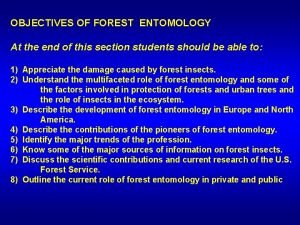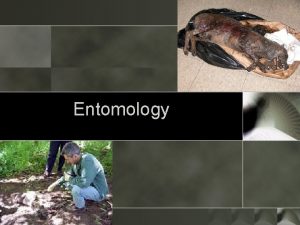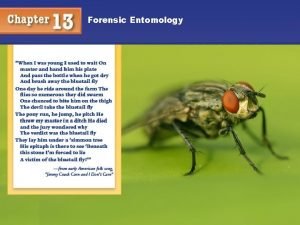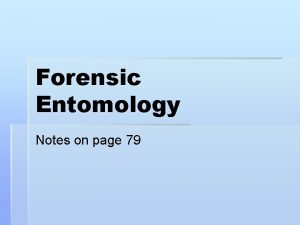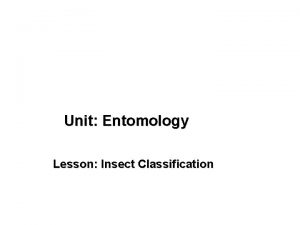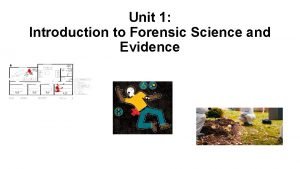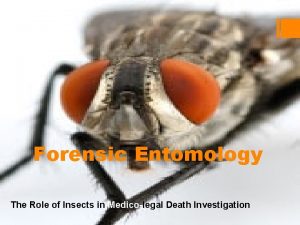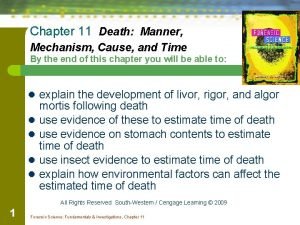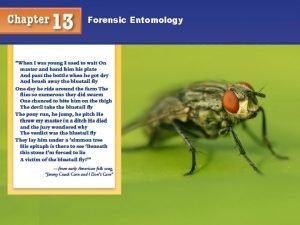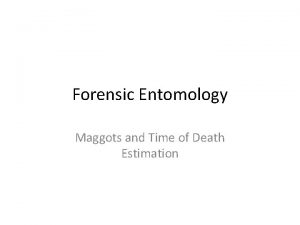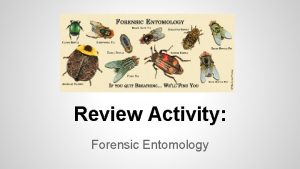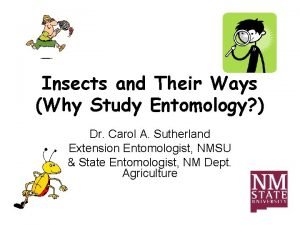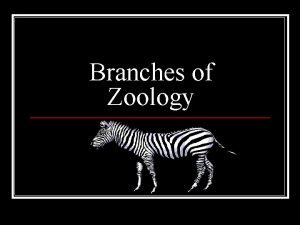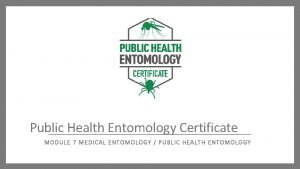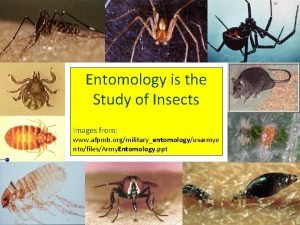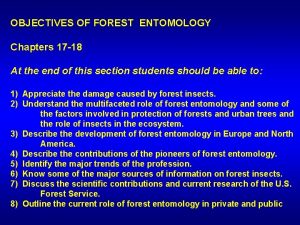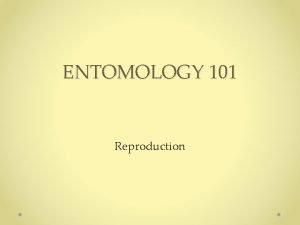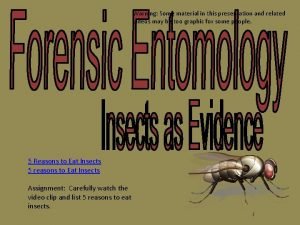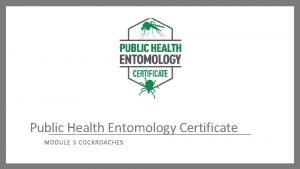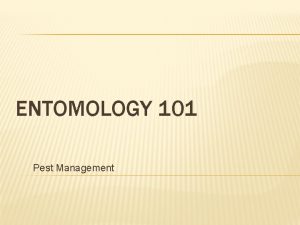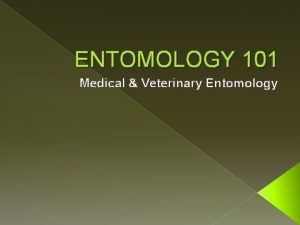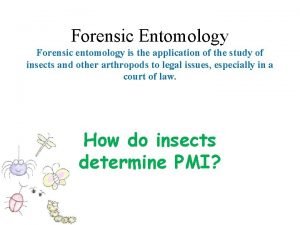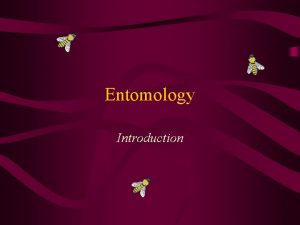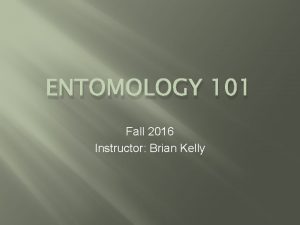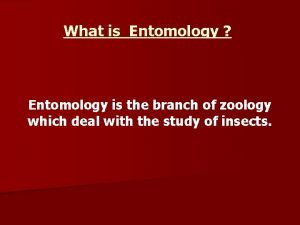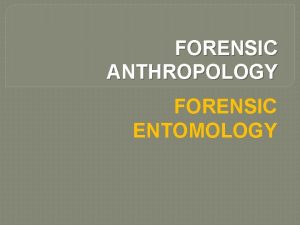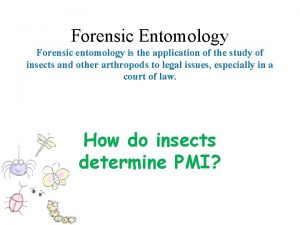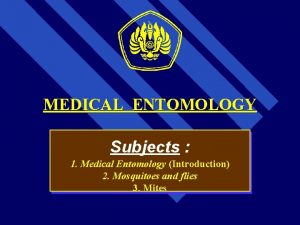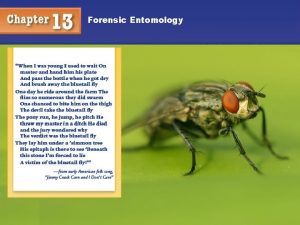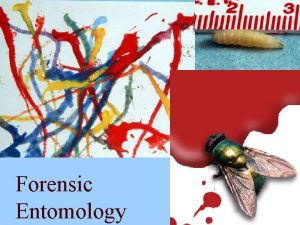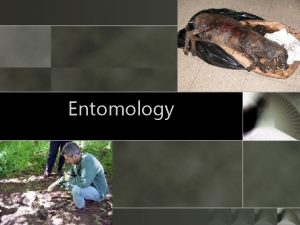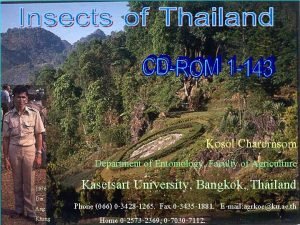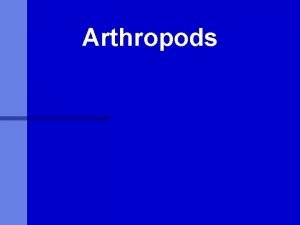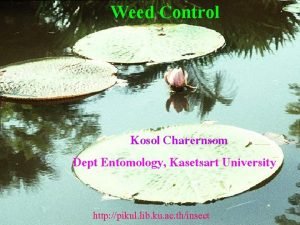Entomology Entomology n What n is Entomology It





































- Slides: 37

Entomology

Entomology n What n is Entomology? It is the study of insects. Insects are always around us. Scientists called entomologist spend most of their time studying these insects

Entomology n What is the average amount of insects that are on the earths surface. n There are more than 750, 000 species of insects which have been identified n There is about 2, 000 species that have not been identified

Entomology n Are n all insects harmful to humans? No, There is about 10, 000 that are harmful to humans.

Entomology n Are insects good or bad? In history we have seen both sides of insects. n The bad side is the destructive ways of mowing down crops or fields. n

Entomology n Did anyone read or hear about the Armyworm problem this spring? n Explain what happened?

Entomology n Some been? more problems with insects have Deadly epidemics of the past have been caused by diseased organisms carried by insects. n Example: bubonic plague epidemic that wiped out the population of Europe in the 14 century was carried by fleas that infested rodents n

Entomology n Cont…. n Digging of the panama Canal have been hindered by insects n n Started by the French in 1880 and abandoned because of workers dieing caused by malaria and yellow fever Which this was carried around by mosquitoes

Entomology n Did you know? n That the discovery of America was indirectly tied to the larvae of a moth. n This moth feeds on particular trees of the mulberry family

Entomology n These moths spun cocoons of long and smooth fibers to create a cloth called silk. n This cloth during the Middle Ages was a high demand or market for this. n Columbus was looking for a passage way to the eastern countries when he ran into America.

Entomology n On page 316. n There is a statue of this insect which is located in Enterprise Alabama. n This area depends on cotton production

Entomology n Around Alabama n Crops that mostly grow are cotton but the invasion of the boll weevil destroyed the crops and a guy named George Washington Carver developed many uses for other crops that would grow in that area.

Entomology n Some n of those crops are : Peanuts n Which came to be more profitable that the cotton

Entomology n Why n do people eat insects? Some cultures will eat insects for food. n Termite larva are considered to be delicious by some people who live in the tropics.

Entomology n Classification n of insects: There are different levels of classifying insects: – Kingdom – Phyla – Class – Order – Family – Genus – Species

Entomology n The highest level is the Kingdom n The most specific is the species level. n Organisms are usually classified by the genus and species. n This is called a binomial nomenclature

Entomology n Here are six orders of insects: Orthoptera- which includes the grasshopper and locust n Hemiptera which includes the true bugs such as leaf hoppers and plant bugs n Lepidoptera – moths and butterflies n Homoptera- aphids n

Entomology n Cont… Thysanoptera- thrips n Coleoptera- which is the largest group of the insect orders this has beetles n

Entomology n How are insects grouped? n They are grouped by the way they feed on plants. So they are grouped by their mouth parts.

Entomology n There are six different mouth parts Sponging n Rasping- sucking n Siphoning n Chewing-lapping n Chewing n Piercing- sucking n

Entomology n Insects have no internal skeleton and they rely on their hard outer coating called exoskeleton which protects their inner organs and supports their body.

Entomology n What is the exoskeleton composed of ? n non cellular layer compose of a material called chitin which is secreted by an inner layer of cells. Chitin is coated with a waxy layer that helps insects retain fluid content of the body

Entomology n Parts of an insect? n There are three parts to any insect n They are Head n Thorax n Abdomen n

Entomology n Head n Has a pair of compound eye and two sensory appendages called antennae.

Entomology n Thorax n It is divided into three segments from which are attached three pairs of legs

Entomology n Abdomen It is attached to the thorax n which will contain more segments n

Entomology n There are two different life cycles that an insect can go through and they are: Incomplete Metamorphosis n Complete Metamorphosis n

Entomology n Incomplete Metamorphosis n Goes from Adult n to late nymph(wings developing) n to Early nymph (no wings) n Eggs

Entomology n Complete n Adult to n Pupa to n Larva to n Eggs to Metamorphosis

Entomology n What is a larva? n It is when the young insect has soft tubular body and looks very much like a worm

Entomology n What is a pupa stage? n It is when the larva matures and will pass throw the pupa stages which is usually a relatively dormant stage.

Entomology n Phytophagous n insects- phyto means plant and phagous means eating. Whenever a plant is eaten on it is damaged in terms of growth and productivity

Entomology n Parasitismn is a relationship that is beneficial to one animal and harmful to the other.

Entomology n What n is DDT? This is a chemical that was discovered by German name Othmar Zeidler in 1874 It is a chemical to cut down on the number of insects in a given area. n Example mosquitoes in the tropics n

Entomology n Integrated pest management uses n Cultural methods n Insect diseases and predators n Pheromones n Release of sterile males n Insect resistant plants varieties

Entomology n Project: n You will be given a copy of some insects you will then make flash cards with the insect on a card. You will need to color you insects by the description that it gives you. So you might want to bring in color pencils. You will then have time in class to study and make cards.

Entomology n On these cards n One side will have insect picture n Second side will have what it will damage and what it will look like n Time of attack n Description of insect
 What is
What is Forest entomology definition
Forest entomology definition Entomology is the study of
Entomology is the study of Body parts of housefly
Body parts of housefly Forensic entomology notes
Forensic entomology notes Complete metamophosis
Complete metamophosis Associative evidence
Associative evidence Vociferous chatter meaning
Vociferous chatter meaning Medicolegal forensic entomology
Medicolegal forensic entomology Chapter 11 forensic entomology
Chapter 11 forensic entomology Forensic entomology lab activity
Forensic entomology lab activity Definition of forensic entomology
Definition of forensic entomology Adh forensics formula
Adh forensics formula Pro corbis
Pro corbis Why study entomology
Why study entomology Zoology branches
Zoology branches Public health entomology certificate
Public health entomology certificate Decomposition
Decomposition Father of forest entomology
Father of forest entomology Entomology 101
Entomology 101 Entomology is the study of _______.
Entomology is the study of _______. Anatomy of a maggot
Anatomy of a maggot Cockroaches life cycle
Cockroaches life cycle Entomology 101
Entomology 101

